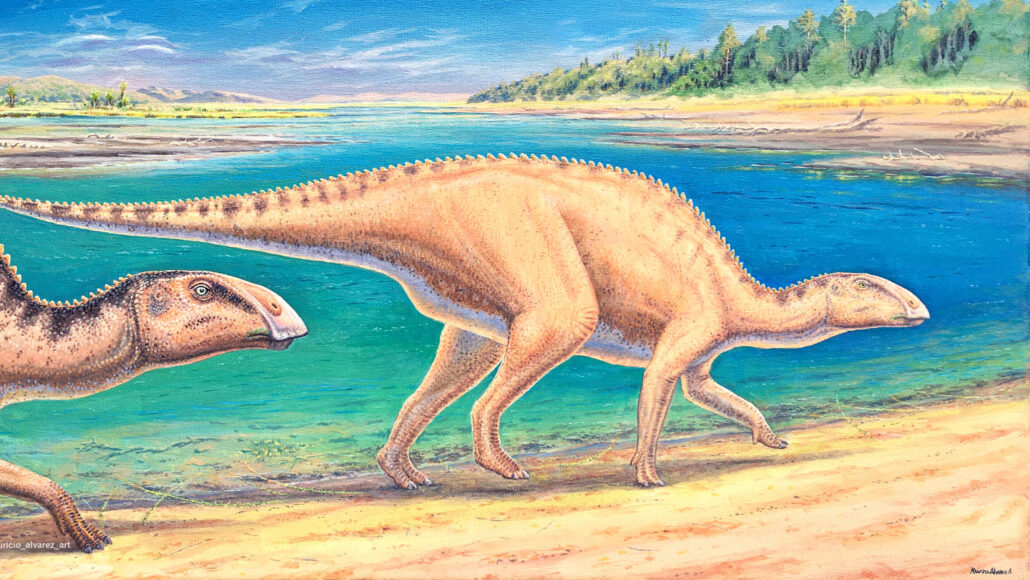The History of Duck-Billed Dinosaurs Could Be Rewritten by Newly Discovered Patagonian Fossils

Fossils discovered at the southern tip of Chile are adding a new perspective to researchers’ understanding of how duck-billed dinosaurs dominated the Cretaceous world.
The hadrosaurids were successful and lived on most continents by the end of the Cretaceous period, around 66 million years ago. However, a study shows that an older duck-billed lineage appears to have thrived some 72 million years ago in subantarctic South America, potentially millions of years before hadrosaurids reached the continent, researchers report in Science Advances on June 16th.
“It’s yet another chapter in the dispersion of these dinosaurs that we did not know about,” says Jhonatan Alarcón-Muñoz, a paleontologist at the University of Chile in Santiago.
Ten years ago, paleobiologist Marcelo Leppe of the Chilean Antarctic Institute in Punta Arenas discovered fossilized bones while searching for plant fossils in the Río de las Chinas Valley in Chile’s Magallanes region. After collaborating with Alexander Vargas, a paleontologist at the University of Chile, the researchers extracted the bones for study. Their findings were remarkable: the bones belonged to a new type of duck-billed dinosaur that had flattened, waterfowl-like snouts, called Gonkoken nanoi.
The researchers suspect they found four distinct Gonkoken individuals. No remains of other animals were found with them, suggesting that the dinosaurs probably traveled in a herd, Vargas says.
Gonkoken appears to be part of an older, less specialized lineage that diverged from other duck-billed dinosaurs around 91 million years ago, before the first hadrosaurids evolved, the researchers say. Gonkoken’s duck-like snout had a simpler construction than that of hadrosaurids, Alarcón-Muñoz says, and it had fewer rows of teeth in its chewing surface. Gonkoken was also relatively small — about four meters long — while some hadrosaurids were true titans, reaching about 15 meters in length.
Seeing a non-hadrosaurid duck-billed dinosaur in South America is “somewhat unexpected,” says David Evans, a vertebrate paleontologist at the University of Toronto who wasn’t involved in the research. The discovery “makes us re-think their biogeographic history in the Americas in interesting ways.”
The researchers believe that duck-billed dinos arrived in South America from North America in two separate waves. “We suspect our kind of duck-billed dinosaur arrived earlier, and reached further south than the hadrosaurids,” says Alarcón-Muñoz, describing Gonkoken as a relict. “In most other places of the world, this kind of dinosaur had already gone extinct by this time.”
The findings may also mean that hadrosaurids were not quite as widespread as previously thought. Fragmentary remains in southern Patagonia and Antarctica that were thought to belong to hadrosaurids may actually be Gonkoken or its close relatives.
The research team wants to examine more dinosaur bones along the Río de las Chinas to see if they belong to Gonkoken as well. Finding more skull bones of Gonkoken could be essential for discovering how it was related to other duck-billed dinosaurs.




